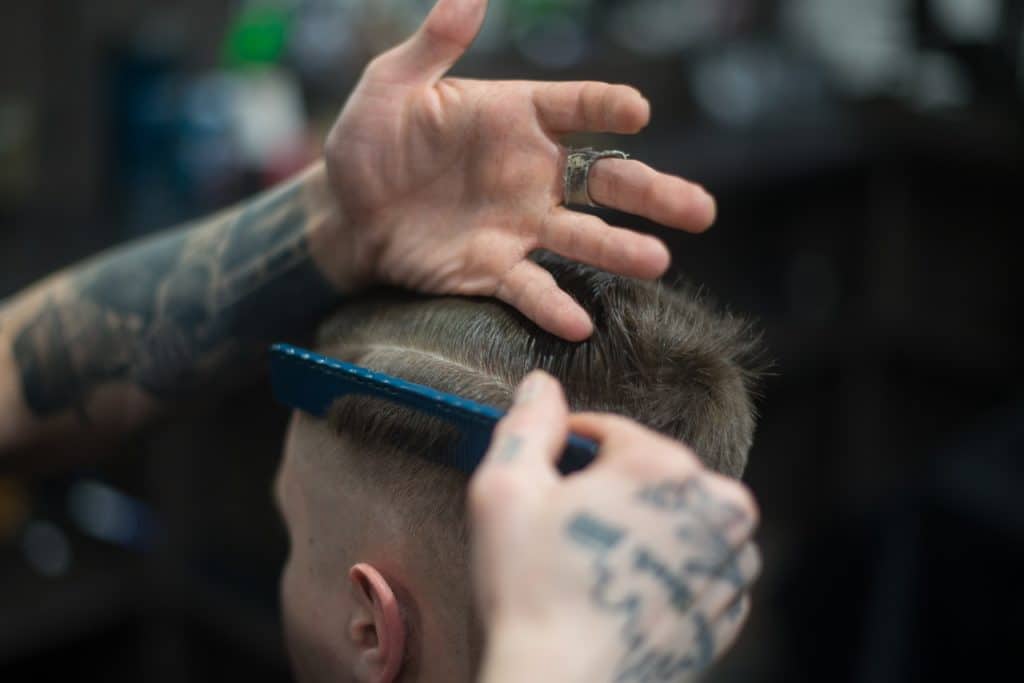Deciding to get a hair transplant is a big decision. It isn’t something to be taken lightly; there are a lot of things that you should consider first as it can be a costly procedure—thinning hair and baldness affect most men at some point in their lives. In addition, some men with a genetic predisposition to hair loss will begin to lose their hair before they turn 21.
A hair transplant can be a great option, especially for men who have tried everything else. It is one of the most effective and long-term solutions. However, before committing, there are some things that you need to look into first.

The Cause of Your Hair Loss
The causes behind your hair loss can determine the success of your surgery. So, before you book your appointment, it is worth trying to get to the root of the issue. For example, if your hair loss is hereditary, then a hair transplant is highly advisable. However, if your hair loss is due to an autoimmune disorder, then it likely won’t take as your immune system attacks the hair follicles, causing the hair to fall out, and this will continue to happen. Therefore, to avoid disappointment and wasted money, it is better to discover the cause of your hair loss beforehand.
Candidacy
It is also important to note that there are other factors that determine candidacy. Simply put, not everyone can receive a hair transplant. Whilst the cause of your hair loss is important, there are other elements that determine whether or not you are a candidate for the procedure. First, has the hair loss stabilised? Ideally, the hair loss should reach a plateau before you book in for the procedure. If you are young and you are only just beginning to experience hair loss, then it may be worth waiting before the procedure; this is because the hair will continue to thin even after the procedure, and the results could be uneven.
Donor Hair
A hair transplant is carried out by harvesting healthy hair follicles from other areas of your head; these follicles are then relocated to make the thinning areas appear fuller. A transplant is meant to restore the look of their hair. However, this depends on the density of the hair in the donor regions. Often the sides and back are the last to thin, and so they are the commonly used donor sites. If you have good donor hairs, then the results can be phenomenal – if not, then the procedure may not be that effective.
You may also like: Four Haircare Tips For Men
The Surgeon
As with any major purchase or medical procedure, it is vital that you do your research beforehand. For example, if you know someone who has had a hair transplant, why not ask them about their experience and if they would recommend their surgeon.
Your choice of surgeon is incredibly important when it comes to medical procedures; the results are greatly affected by the skill of the surgeon and the quality of care provided by the clinic. So, first, check their accreditation and their clinics standing. Then, check online and read reviews and make sure to ask for before and after photos to see your surgeon’s previous works.
Your Budget
Before you book your appointment, you should have a set budget in place. The NHS rarely provides hair transplants as they are considered elective or cosmetic procedures. The cost of the procedure can vary depending on where you decide to have the procedure and the intensity of the work that needs doing. Some clinics do offer a payment plan. They can be expensive, but often the results are worth it, as it is the only permanent solution to the problem.
Because hair transplants are so expensive, many Brits travel abroad for their procedures. However, it is more affordable, and you can still get exceptional results. The Longevita Clinic in Turkey is an option that you should explore if you are considering a hair transplant in Turkey. They have a host of highly trained surgeons, and often the procedure costs a fraction of the price that it would in Britain.
The Procedure Itself
A hair transplant usually takes between six and eight hours to complete. It is often carried out under local anaesthetic; however, there is usually the option for sedation. The FUE or Follicular unit extraction technique is used whereby a surgeon uses micropunches to extract single follicles and move them to the area of transplant. As with most medical procedures, there is the possibility for side effects; however, as it can be done without sedation, these are limited. There may be bleeding, swelling, bruising, itching and numbness. Within two weeks, you can expect most of the wounds to have healed, and the evidence of the procedure is lessened.
You may also like: 7 Best Short Haircuts to Stay Cool This Summer
The Results
The results will vary from person to person. Each person is different, the way their hair grows, the structure of the hair, and the thickness of the strands. The donor hair, as mentioned above, accounts for a lot of the final result. Taking a look at the before and after photos of your surgeons’ previous clients can give you an idea of the results that you can expect in terms of how they construct the hairline and the quality of their work. The results also do take time; they are not instantaneous. The first change that can be expected is the outline of the hairline, but in terms of regrowth, it can take up to a year for the final results.
Hair Care Afterwards
Immediately following the transplant, there will be some things that you need to do. Your surgeon will go over these with you, but essentially you will be caring for an open wound. Hair products should be avoided for at least a month. Avoid taking blood thinners for at least a week after your procedure, and if you smoke, you will need to avoid cigarettes initially, too. After the surgery, you will be given some instructions to follow. Listen to your surgeon carefully, and make sure that you ask questions if you are unsure about anything that you have been instructed to do.
After the transplant has healed, you can treat your hair as normal. There are no real changes needed to your hair care routine. Remember, it is a permanent solution. The transplanted hair will be affixed to your scalp. The hair should stay in place; eighty per cent of your new growth will appear in the first eight months. The hair at the crown of your head can take longer to grow. Try to be gentle with it until the regrowth process is finished.
In Conclusion
Depending on the cause of your hair loss, a hair transplant may be the best solution for you. It often provides the best results as although there are other options; they are often far less effective and not as long-lasting. Research is key; if you decide to have this procedure, you need to educate yourself on what you can expect from it as well as researching the clinic that you want to have your procedure in. The choices that you make have a direct impact on the results that you can expect.

